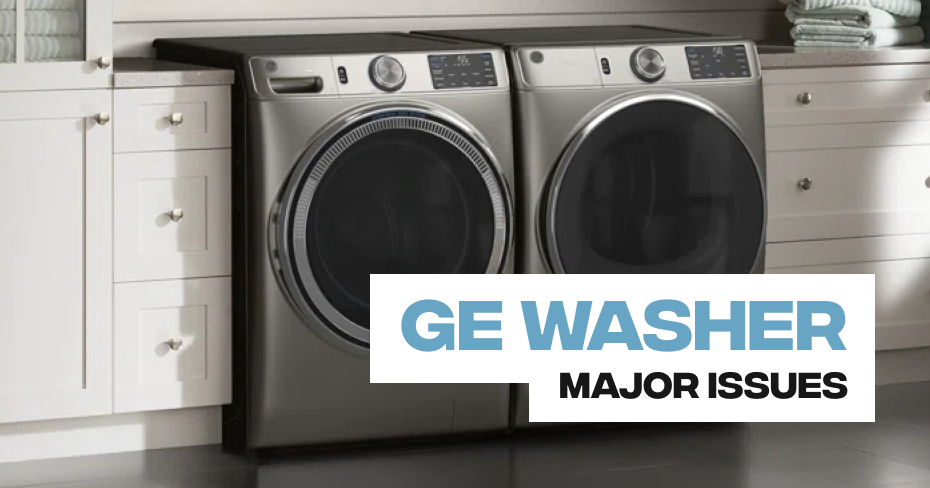
GE Washer Leaks and Water Overflow
GE Washing Machine Water Inlet Valve
Try shutting off power to the washer while the machine is filling with water. If the washer continues to fill with water even when it is not getting power, this indicates that the water inlet valve is defective. If the water inlet valve is defective, replace it.
GE Washing Machine Detergent Dispenser
Since most detergent dispensers use a water valve to flush the detergent or other additives into the washer, a leaking dispenser water valve can cause the washer to overflow. If water is constantly dripping or flowing into the dispenser and the water valves are part of the detergent dispenser the dispenser will need to be replaced.
GE Washing Machine Main Control Board
A dishwasher’s main control board provides power to nearly every electrical component in the dishwasher. If the control board continues to send power to the water inlet valve during the drain cycle, the dishwasher could overflow. While this is not that common of a problem, you can inspect the board for signs of burning or a shorted-out component. You can also use a multimeter to test the water inlet valve for incoming power during the dishwasher’s cycle.
Low Water Pressure from House Supply
The water pressure to the water inlet valve might be too low. The water inlet valve requires a minimum of 20 psi to shut off properly. If the water inlet valve does not get enough pressure, the valve may not close fully after the power is shut off. As a result, water can leak into the washer and cause it to overflow. If you have a whole house filter it may be clogged and the filter needs to be replaced. If the water pressure is low at all the faucets You may need to call your local water supplier to determine if the water pressure is sufficient.
GE Washing Machine Pressure Switch
The pressure switch shuts off power to the water inlet valve when the proper water level is reached. If the pressure switch fails, the water inlet valve will continue to fill the washer tub with water, causing the washer to overflow. Before replacing the pressure switch, check the air tube to the pressure switch to ensure that it is clear of debris and is not leaking.
GE Washing Machine Control Board
Since a washing machine control board provides voltage to nearly all of the washer’s electrical components, a board with a shorted component may send continuous voltage to the water inlet valve, causing the washer to overflow. You can inspect the board for signs of burning or a shorted-out component and use a multimeter to test the power output terminals on the board after reviewing the appliance’s wiring diagram. Some washing machine control boards will have a built-in pressure sensor used to determine how much water to allow into the tub. The control board pressure sensor monitors the amount of water entering the tub during the fill cycle and will shut off voltage to the water inlet valve when the water has reached the proper level. A defective control board pressure sensor may allow too much water to fill the tub resulting in the washer overflowing. You can use a multimeter to test for appropriate changes in electrical continuity to help determine if the component is defective.
